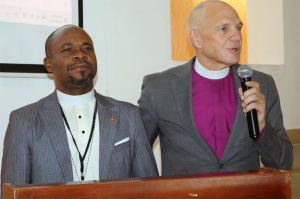Online churches don't hurt local church growth: study

Does the online church actually help grow the Church? A new study, billed as the most extensive of its kind, is touting the benefits of doing church online — and no, it’s not to simply build a crowd.
According to “State of the Online Church,” led by Saddleback Church’s Online Campus Pastor Jay Kranda, 59 percent of churches have seen physical growth since launching an online ministry.
The study, conducted last year in partnership with Vanderbloemen and Pushpay, is based on data from 176 online and digital church leaders. Kranda says the evidence is clear and he hopes the study will allay fears that church online isn’t effective in bringing people to Christ or that it would compete with or hurt the local church.
Seventy-five percent of digital church leaders reported that people attended online services first then showed up in person. Many online attendees were found to be living within driving distance of the church, with 42 percent reporting such attendance.
Overall, 58 percent said they agree that online ministry is helpful to their church. Thirty-eight percent saw an increase in giving since launching their online ministry. Meanwhile, around 15 percent said they are unsure of the impact.
Not everyone does “internet church” or “church online” the same. While most do live streaming, 52 percent of those surveyed said they offer the full church service (message and worship) on-demand. And 47 percent provide on-demand messages only.
But church online doesn’t stop there for many. Most (81 percent) also offer prayer online, 72 percent offer giving opportunities, 58 percent provide pastoral care, 54 percent present serving opportunities, 52 percent offer online groups and 25 percent provide home small groups.
Kranda has been serving as the online campus pastor at Saddleback Church in Lake Forest, California, since 2012. He doesn’t just livestream the megachurch’s service for consumption. What he’s primarily focused on is engaging those who join virtually and eventually getting them connected to a local church or into small groups.
“Church online is more robust,” he said in a pro church tools podcast in 2015. “We don’t want to gather a crowd … but [we’ve] got to have all these steps to grow somebody.”
It’s not just about getting content out there. It’s about getting people to worship God with their lives, share their faith, connect with others, grow in faith and serve others in love, Kranda explained.
It’s also fostering community, the study maintained.
The trend, according to Kranda, is moving away from an individualistic experience and moving toward a more community-based online church experience.
The California pastor regularly sees some 20,000 people join Saddleback’s online services (only counting those who have been watching for 30 minutes or longer). He oversees 900 online groups and 1,300 home groups.
He describes himself as “a small groups pastor with an online venue to get people connected.”
More importantly, he cares for these people.
“I’ve helped people start online small groups with family members across different states using video conferencing software like Zoom and Skype. I’ve empowered entrepreneurial people to launch in-home small groups far from our church’s physical location. I’ve traveled places to baptize people in bathtubs and have trained online members from different continents to baptize fellow believers. God is doing amazing things through different technologies, and online ministry is at the forefront of this decentralizing learning curve,” Kranda said in the study.
Notably, the survey revealed that technical skills aren’t required to be an online church pastor. What is needed is pastoral skills. And many of the pastors surveyed were found to have only done online ministry for a couple of years compared to decades of vocational ministry.
“Online ministry is about people pastoring people,” it noted.
Even among those surveyed, technical skills were not more dominant among online pastors.
Only a minority of the churches have a full-time online pastor. Churches are more likely to have online pastors who are volunteers or who also have other responsibilities in the church.
Moving forward, more than half of the churches are considering using their online ministry to launch future churches and multisite locations.
The study stressed that digital churches will never replace local churches but will come alongside and support them. “The local church isn’t going anywhere. Online streaming will not stop the need for local churches all around the world.”
With that, Kranda is hoping more people will change their minds and see the positive impact that church online can have on the local church.





























